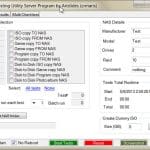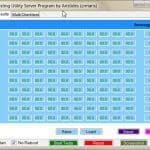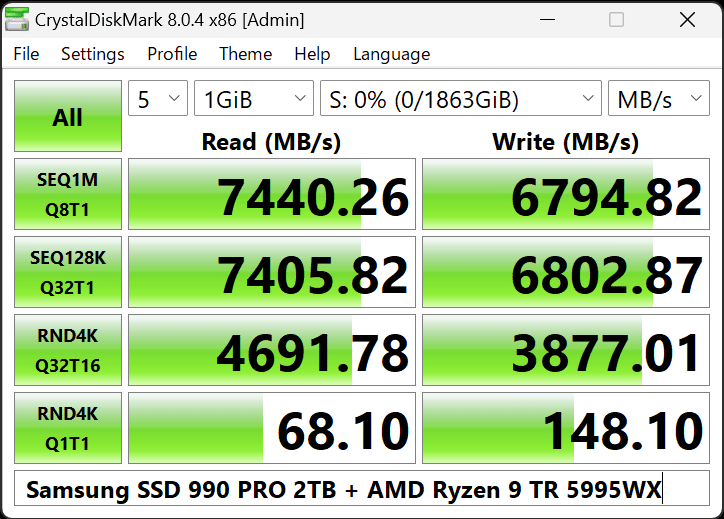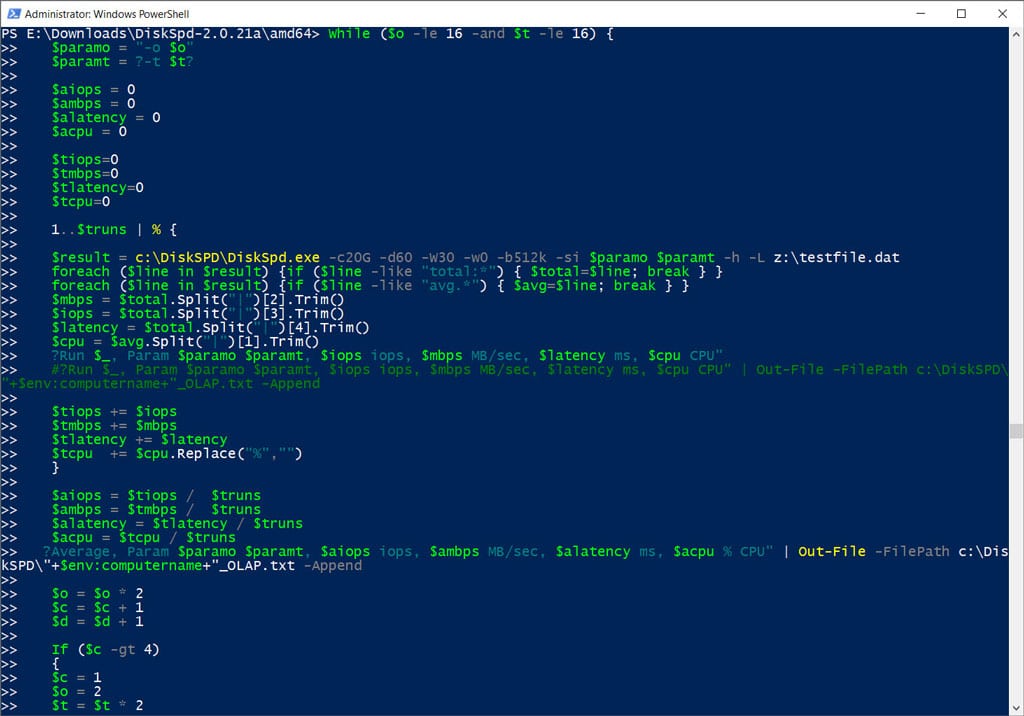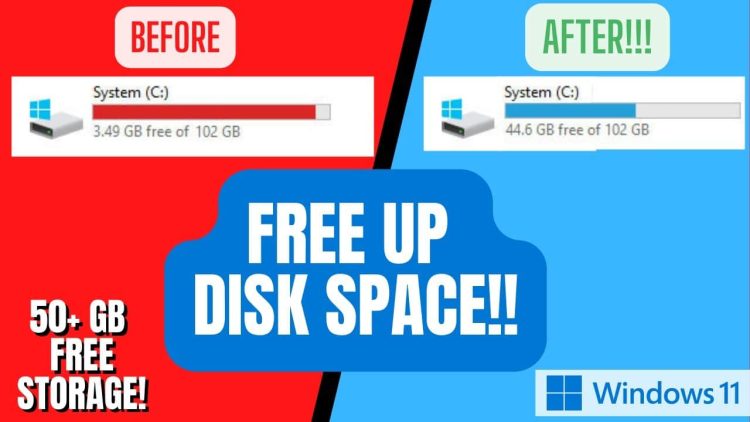Test System
| Test System Specs | ||||
| Mainboard | Asus TUF GAMING X670E-PLUS | |||
| CPU | Ryzen 7 7800X3D | |||
| GPU | Galax RTX 4060 Ti | |||
| NVMe | XPG SX8200 Pro 2 TB NVMe | |||
| RAM | XPG Lancer DDR5 (2 x 16GB) 6000MHz | |||
| Power Supply | Seasonic Vertex 1200W (Cybenetics Platinum) |
|||
| CPU Cooler | NH-D15S | |||
| Case | Raijintek PAEAN | |||
| Ambient Temperature | 30°C ±2°C | |||
| Drivers | AMD Chipset: 5.02.19.2221 NVIDIA: 535.98 WHQL |
|||
Methodology
I use three benchmarks to evaluate the NAS server’s performance. The first is custom-made. It performs ten basic file transfer tests and measures the average MB/s speed for each. To extract results that are as accurate as possible, I run all selected tests ten times and use the average as the final result.
The second benchmark I use is CrystalDiskMark, which measures Sequential and Random Performance (Read/Write/Mix)
The third benchmark I use in my test sessions is DiskSpd by Microsoft, a highly flexible storage test tool capable of very accurately simulating different workloads. I wrote two advanced scripts, one that simulates an On-line Transaction Processing (OLTP) system and another that simulates an On-line Analytical Processing (OLAP) system. The OLTP scenario consists of many short transactions, where IOPS (Input/Output Operations Per Second) play a key role. The number of transactions is low in my OLAP scenario, but the queries can be very complex. Response times are crucial for an OLAP system, and a NAS server’s maximum throughput speed is reached in this scenario because the block size is quite large.
OLTP systems generally serve the purpose of gathering input information and storing it in a database. This is done on an enormous scale, and the most common operations are INSERT, UPDATE, and DELETE. An OLTP database holds detailed, current data; an entity model, usually 3NF, is used as the schema to store transactional databases. An OLTP database also usually has high read-to-write ratios (typically 90/10 to 70/30).
OLAP systems are used to analyze the data stored in a database. OLAP systems mostly apply select operations in large data warehouses to collect information (data mining). An OLAP database consists of aggregated, historical data stored in multi-dimensional schemas (usually star schemas). Their read-to-write ratio is very high; sometimes, there might only be read operations.

